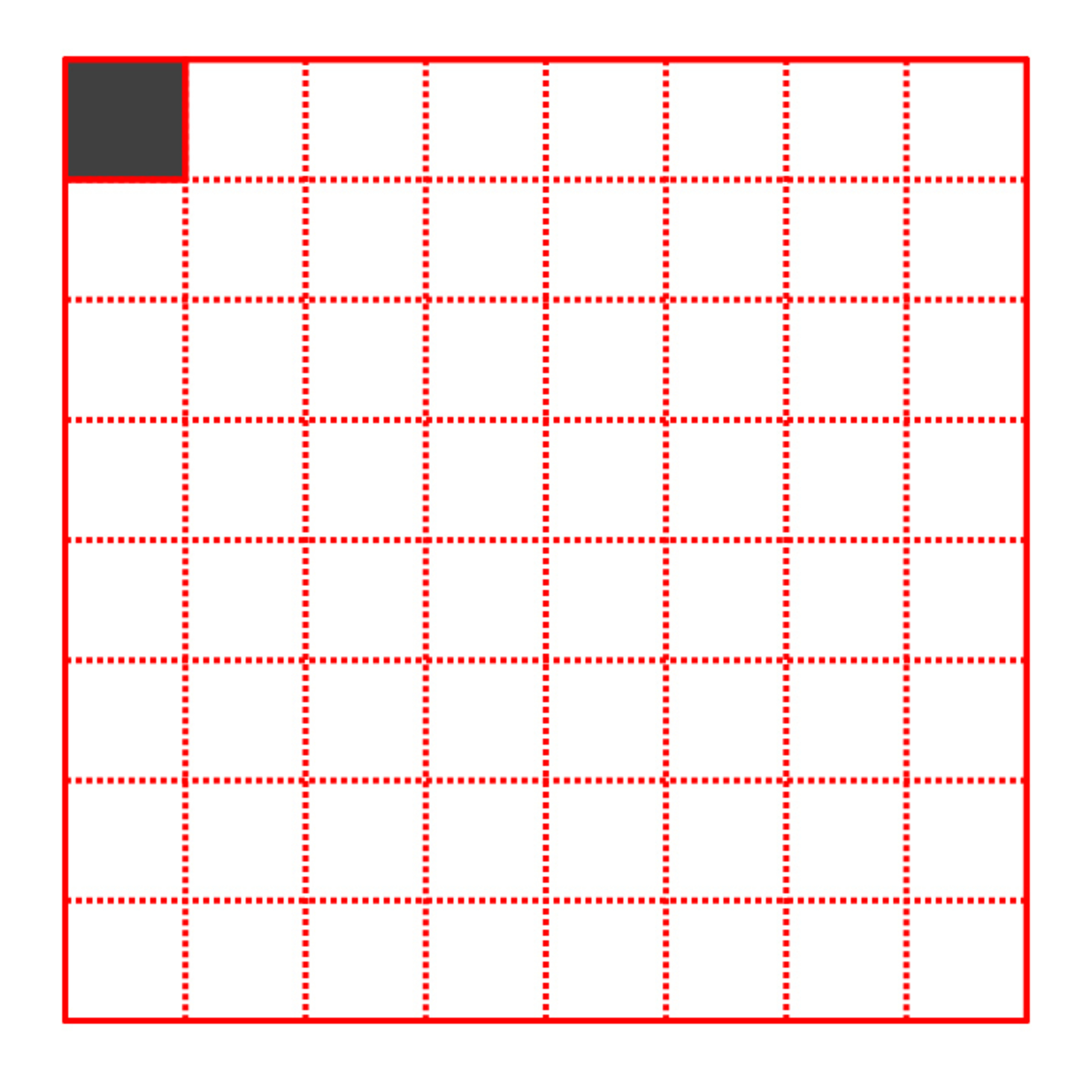There is an
square. The top left field is black, the others are white. You can colour a white
square to black, if it shares an edge with an odd number of black squares (diagonals don't count). Could it be that at some point the whole square will be black?

This section requires Javascript.
You are seeing this because something didn't load right. We suggest you, (a) try
refreshing the page, (b) enabling javascript if it is disabled on your browser and,
finally, (c)
loading the
non-javascript version of this page
. We're sorry about the hassle.
Let's look at the black polygon's perimeter. In the beginning it's perimeter is 4 .
If we color a cell which has 1 adjacent black square, then the perimeter grows by 2 .
If we color a cell which has 3 adjacent black squares, then the perimeter decreases by 2 .
So suppose yes, it could be. Then we have to color 6 3 squares. Since by two coloring the perimeter grows by 4 , 0 or − 4 , after the 6 2 . coloring the perimeter will be divisible by 4 , so after 6 3 coloring, the perimeter won't be divisible by 4 . (It will make 2 remainder.) But the whole square's perimeter is 4 × 8 = 3 2 , which is not possible.
So the answer is: No, it can't happen.